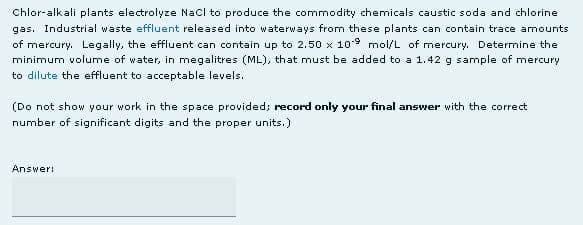Chlor-alkali plants electrolyze Nacl to produce the commodity chemicals caustic soda and chlorine gas. Industrial waste effluent released into waterways from these plants can contain trace amounts of mercury. Legally, the effluent can contain up to 2.50 x 10 mol/L of mercury. Determine the minimum volume of water, in megalitres (ML), that must be added to a 1.42 g sample of mercury to dilute the effluent to acceptable levels. (Do not show your work in the space provided; record only your final answer with the correct number of significant digits and the proper units.) Answer!
Thermochemistry
Thermochemistry can be considered as a branch of thermodynamics that deals with the connections between warmth, work, and various types of energy, formed because of different synthetic and actual cycles. Thermochemistry describes the energy changes that occur as a result of reactions or chemical changes in a substance.
Exergonic Reaction
The term exergonic is derived from the Greek word in which ‘ergon’ means work and exergonic means ‘work outside’. Exergonic reactions releases work energy. Exergonic reactions are different from exothermic reactions, the one that releases only heat energy during the course of the reaction. So, exothermic reaction is one type of exergonic reaction. Exergonic reaction releases work energy in different forms like heat, light or sound. For example, a glow stick releases light making that an exergonic reaction and not an exothermic reaction since no heat is released. Even endothermic reactions at very high temperature are exergonic.
I need some assistance.

Step by step
Solved in 3 steps









